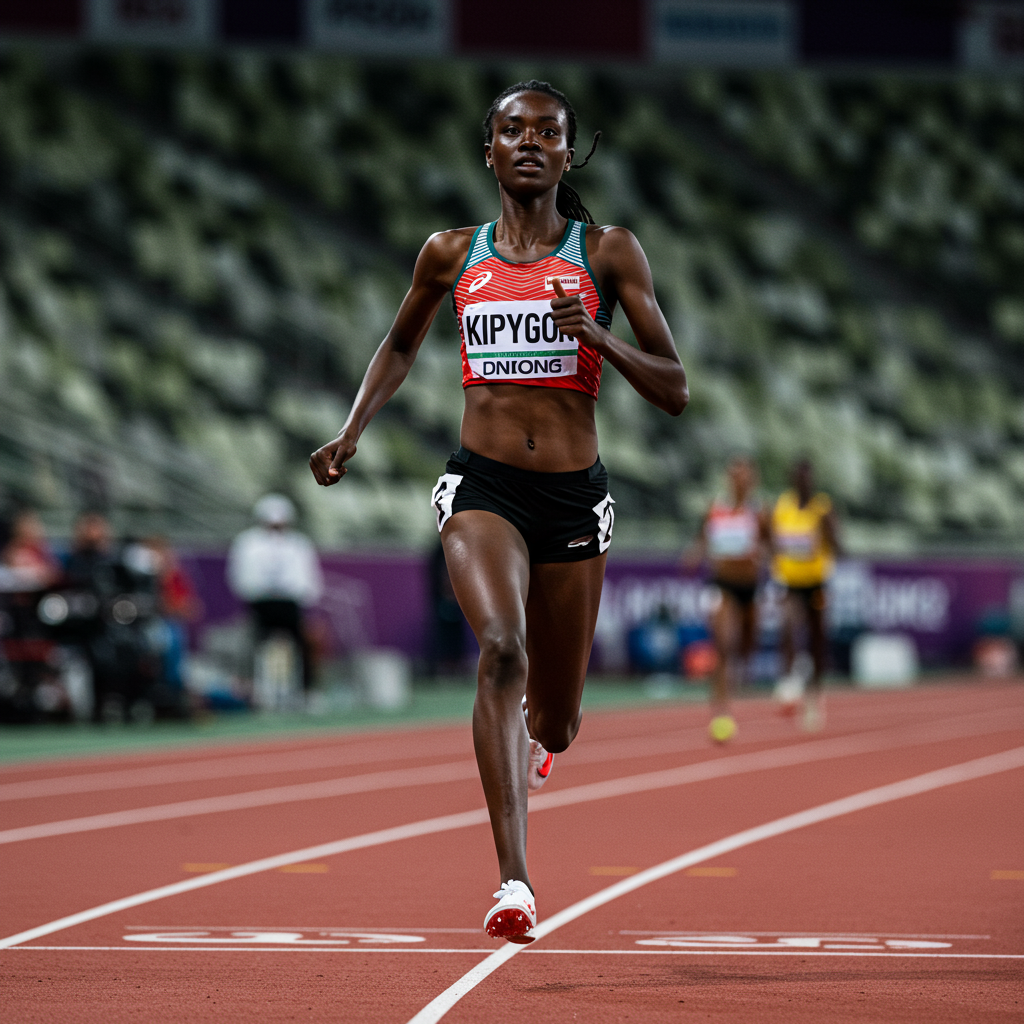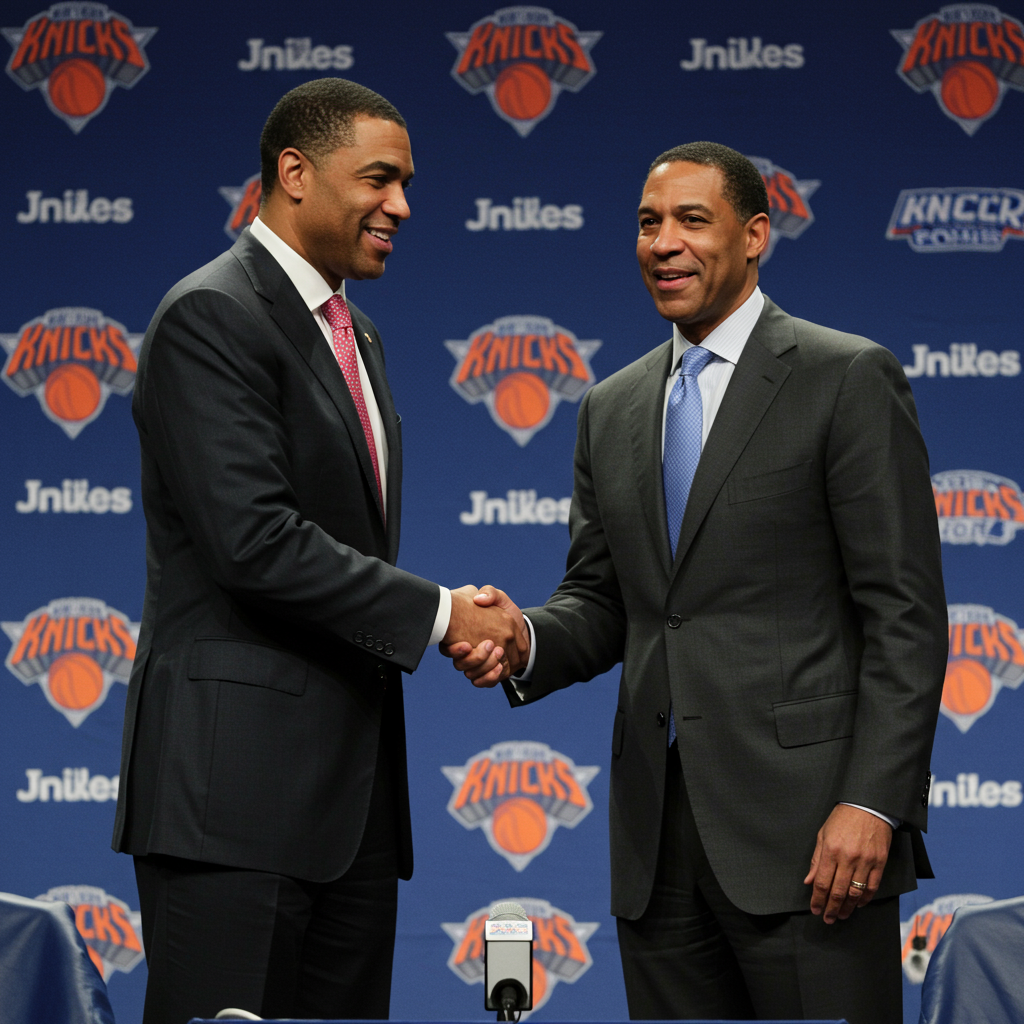Elite runner Faith kipyegon recently attempted a monumental feat in Paris: breaking the four-minute barrier for the women’s mile. This challenging target, never before reached by a woman, was framed as a potential breakthrough moment for women’s athletics. While Kipyegon is one of the most dominant middle-distance runners globally, her performance on the day didn’t achieve the sub-four target. However, declaring her attempt a “failure” misses the point entirely. The event instead became a revealing case study highlighting how marketing, media narratives, and misinterpreted science can create unrealistic expectations in sports.
The Science That Ignited the Hype
The push for Kipyegon to attempt a sub-four-minute mile gained significant traction following a scientific study published in February 2025. This research suggested that under highly specific and ideal conditions, Kipyegon theoretically possessed the capability to run a mile in 3:59.37. The core assumption relied heavily on perfect aerodynamic drafting from pacers throughout the entire distance. It also required Kipyegon to be in the absolute peak physical condition she demonstrated when setting her astounding women’s mile world record of 4:07.64 in 2023. The study’s authors reportedly acknowledged these critical limitations candidly. Their conclusion was framed as a possibility if every single factor aligned flawlessly, not a guaranteed outcome.
From Possibility to Imminent Breakthrough
Despite the careful caveats from the scientists, media coverage and subsequent marketing efforts quickly amplified the findings into a narrative of impending history. News reports often portrayed Kipyegon as being on the verge of shattering the four-minute barrier, implying that minor technical assistance was the only remaining obstacle. A significant push materialized, positioning the attempt as history in the making, fueled by scientific innovation and new gear. The widespread public message became that, thanks to advancements and support, Kipyegon was about to redefine what was possible for women in the mile.
This powerful narrative, however, largely overlooked alternative scientific perspectives. Curiously absent from the prominent discussion was a second, more conservative analysis. Published in April, this study, co-authored by even a Nike scientist, reached a different conclusion. It stated that current data were “insufficient to suggest that a sub-4 minute mile is imminent.” This dissenting viewpoint did not make its way into the company’s extensive marketing materials. This suggests that at least one individual within the organizing entity was likely aware that the sub-four target was a significant long shot. Yet, the allure of an inevitable, scientifically-backed breakthrough proved far more marketable than the reality of statistical uncertainty.
The Reality of the Outcome
When Kipyegon ran in Paris, she did not break the four-minute barrier. She finished in approximately 4:06. While this represented a personal best improvement of 1.2 seconds, she still needed over six additional seconds to reach the highly publicized target. In the incredibly demanding world of elite running, races and records are often decided by mere hundredths or tenths of a second. A gap of over six seconds at this level signifies a substantial distance, not merely “brushing history.” It was, in fact, chasing a distant shadow, despite the pre-event fervor.
Looking at the numbers, the outcome shouldn’t have come as a major surprise. The leap from Kipyegon’s existing world record of 4:07.64 to sub-four minutes (3:59.99 or faster) requires an improvement of more than 3%. For an athlete already performing at the absolute pinnacle of human potential, a 3% gain is not a marginal adjustment. It represents a significant “quantum leap.” Kipyegon had already dedicated years to rigorous training, starting as a teenager, and benefits from the best coaching, facilities, and equipment available in modern sport. The idea that aerodynamic enhancements, specialized pacers, or new gear alone could bridge such a substantial gap was, in hindsight, unrealistically optimistic. To put it in perspective, Eliud Kipchoge’s historic sub-two-hour marathon required an improvement of about 1.6% under controlled conditions – roughly half the percentage jump needed for Kipyegon to go sub-four in the mile.
Broader Implications and Framing Issues
The pre-event messaging consistently promoted the idea that science and technology would enable the “impossible.” Now that the attempt fell short, there’s a risk the public might unfairly question the credibility of the underlying science. This scenario mirrors a troubling pattern: inflate scientific findings, build a huge marketing campaign around them, and then quietly downplay expectations when reality doesn’t meet the hype. This recurring cycle can gradually erode public trust in science, particularly when the original scientific nuance gets lost amidst media excitement and corporate promotion.
Beyond the scientific misrepresentation, the framing of the event raised other important questions. The setup included a team of pacers, predominantly men. While this choice was based on physiological reality – men are typically capable of sustaining faster, more consistent paces than most women – the visual message was challenging to overlook. It arguably reinforced a potentially dispiriting narrative: that to achieve this specific benchmark of “greatness” (defined by a historically male standard), a woman athlete required assistance from men.
Comments made during the broadcast further highlighted this problematic framing. For example, nine-time Olympic gold medalist Carl Lewis suggested altering rules for “special” athletes like Kipyegon to allow the world to see her excellence. While intended as praise, this sentiment inadvertently reinforced the notion that a woman’s already demonstrated excellence – including multiple Olympic gold medals and existing world records – was somehow insufficient and required exceptions or special conditions to be fully appreciated against male performance benchmarks. Now that the sub-four barrier wasn’t broken, this message echoes louder: Even with male support and seemingly ideal conditions, the female athlete “still falls short” against that specific, artificially imposed benchmark.
Undermining Women’s Sports Excellence
This dynamic underscores a persistent paradox in sports culture. We celebrate the incredible achievements of women athletes, yet there’s a tendency to contextualize those achievements against male standards and records. When the definition of athletic greatness becomes anchored to male physiology, and artificial methods are engineered to help women reach those specific male benchmarks, it risks undermining women’s sports rather than genuinely elevating them.
The Faith Kipyegon event wasn’t presented as an elite athlete pursuing a personal best or extending her own already remarkable world record. Instead, it was explicitly positioned as a campaign aimed at breaking the four-minute barrier, framed as being “on behalf of all women.” Now that the goal wasn’t met, the question lingers: What does this outcome signify? Nike marketed Kipyegon as “brave” for attempting a target that, based on conservative scientific analysis and physiological reality, was likely beyond her current physiological capacity. Celebrating someone for the attempt at something physiologically improbable, regardless of the outcome, risks patronizing women athletes. It can inadvertently diminish the immense respect and recognition they deserve for their actual achievements and records, which are extraordinary on their own terms.
This ambitious time trial wasn’t primarily driven by Faith Kipyegon’s personal dreams or innate talent; she did not overpromise, nor did the nuanced scientific analysis that initially sparked the idea. Instead, it appears to have been largely about a corporation leveraging an athlete’s greatness to sell products like sports bras and speed suits. Long odds were transformed into powerful marketing material through an unrealistic and often misleading hype machine.
Consider which moment is truly more inspiring: Witnessing Kipyegon decisively pulling away from the world’s fastest women during the final lap of a standard competition to shatter the women’s mile world record in 4:07.64 in 2023? Or watching her strain while flanked by male pacers, struggling to maintain their pace, and crossing the line seconds adrift of a target? The former, showcasing raw competitive brilliance and dominance against her peers, is undeniably the more compelling and genuinely inspiring athletic moment. It reflects true excellence on her own terms, not against a staged, marketing-driven benchmark rooted in male standards.
Frequently Asked Questions
What was the science behind the prediction Faith Kipyegon could run a sub-four minute mile?
A scientific study published in February 2025 suggested Faith Kipyegon could theoretically run a mile in 3:59.37. This projection was based on specific, ideal conditions, including perfect aerodynamic drafting from pacers. Crucially, it assumed Kipyegon was in the peak physical condition she demonstrated during her 4:07.64 world record run in 2023. The authors acknowledged these factors were essential for the prediction to hold true.
How did the media and marketing misrepresent the scientific findings for Faith Kipyegon’s mile attempt?
While the initial science presented a sub-four mile as a theoretical possibility under perfect conditions, media coverage and marketing campaigns often portrayed it as an imminent or likely breakthrough. They emphasized the potential without fully explaining the stringent conditions required or mentioning more conservative scientific analyses that deemed a sub-four minute mile not immediately feasible based on existing data. This created inflated public expectations.
What does the Faith Kipyegon mile attempt reveal about marketing in elite sports?
The event serves as a case study showing how corporate marketing can amplify scientific possibilities into guaranteed outcomes to generate hype and sell products. It highlights a potential conflict between genuine athletic progress and commercial interests, suggesting that compelling narratives for marketing purposes may sometimes override realistic expectations and potentially distort public perception of athletic achievements and scientific credibility.
Conclusion
Faith Kipyegon’s attempt to break the four-minute mile in Paris, while not achieving the specific, heavily-marketed target, was far from a failure for the athlete herself. Her performance underscored her position at the absolute peak of human running capability, marked by years of dedicated training and existing world records. The event, however, illuminated a disconnect between nuanced scientific possibility, realistic athletic progression, and aggressive corporate marketing strategies. It prompts important conversations about how women’s sports achievements are framed, often against outdated male standards, and the potential impact of marketing hype on public trust in both sports and science. Recognizing and celebrating the incredible feats of athletes like Kipyegon on their own merits, rather than through manufactured challenges tied to commercial agendas, is crucial for truly valuing and elevating women’s sports.




